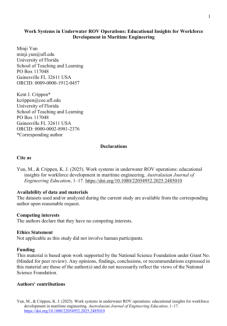Studies of ROV concepts 2025 - Part A





2 - Dynamic Target Hunting Under Autonomous Underwater
Vehicle (AUV) Motion Planning Based on Improved Dynamic
Window Approach (DWA).

Authors: Juan Li, Houtong Lu, Honghan Zhang, and
Zihao Zhang
A new method for hunting moving targets using multiple
Autonomous Underwater Vehicles (AUVs) is proposed. It
combines an improved Dynamic Window Approach
(DWA) with Rapidly-exploring Random Tree (RRT) and
includes collision avoidance rules. These rules help select
safe paths, enhancing obstacle avoidance and reliability.
A consistency algorithm ensures the task adapts if an AUV
fails. The method effectively predicts target movements
and allocates hunting points, resulting in efficient multi-
AUV hunting strategies.



20 - Hydrodynamics Model Identification and Model-Based Control
Application of a New Type of AUV
Authors: Lunyang Lin, Yuxiang Chen, Hong Xiong,
Chunliang Yu, Hong Zhu, Yiyang Xing, and
Guodong Zheng
The hydrodynamic coefficients of underwater robots
help assess their maneuverability and stability, aiding in
controller design. This paper introduces an Autonomous
Underwater Vehicle (AUV) with a negative-lift profile,
using a method that integrates neural networks to
identify hydrodynamic coefficients. A dynamic model is
built for the AUV, and an MPC controller is designed.
Simulations and pool tests show that despite errors in
calculating hydrodynamic coefficients, the controller still
effectively manages the AUV, proving the practicality of
using CFD methods for these calculations in real
applications.



1 - Coverage path planning for multi-AUV considering ocean
currents and sonar performance.
Authors: Xukai Mu and Wei Gao
Coverage path planning (CPP) for autonomous
unmanned vehicles (AUV) takes into account sonar
performance and ocean currents. This study suggests an
integrated algorithm that combines the Dijkstra algorithm
for the shortest path, Particle Swarm Optimization (PSO),
and the ELKAI library to manage multi-AUV task allocation
and path optimization, demonstrating effective results in
simulations.



24 - Cooperative control for a ROV-based deep-sea mining vehicle
with learned uncertain nonlinear dynamics.
Authors: Yuheng Chen, Haicheng Zhang, Weisheng
Zou, Haihua Zhang, Daolin Xu
This paper proposes an improved deep-sea mining system
using a remotely-operated vehicle (ROV) to address track
slippage issues in traditional systems. It presents a dynamic
model for the ROV-based Deep-sea Mining Vehicle
(RDMV) and introduces a cooperative control strategy. A
distributed model predictive control (DMPC) controller
and a learning-based model predictive control (LMPC)
controller are developed, with a prediction function for
external disturbances. The effectiveness of the LMPC
controller is tested, while the cooperative strategy is
validated through simulations.



18 - Design and Performance Verification of A-HFM Signals for
Simultaneous Frame Detection, Cell ID Assignment, and
Doppler Estimation in AUVs Using Multiple Surface Buoys.
Authors: Sae-Yong Park, Tae-Geon Chung, and Tae-Ho
Im
This study discusses improvements in Autonomous
Underwater Vehicles (AUVs) and their communication
capabilities. It introduces a method using Superimposed
Adjusted-HFM signals for reliable underwater
communication, particularly under Doppler conditions.



19 - ROV Teleoperation in the Presence of Cross-Currents Using Soft
Haptics.
Authors: Joshua Brown, Ildar Farkhatdinov, Michael
Jenkin
The remote operation of underwater vehicles is
challenging due to unseen environmental disturbances
like cross-currents. This study investigates a new haptic
touchpad that uses vibrations to inform operators about
cross-currents. An experiment showed that haptic
feedback significantly reduced cognitive load and
improved positioning accuracy for operators. Although
conducted under controlled conditions, this method can
be applied in real-world situations to share live
environmental data.



3 - A novel real-time intelligent detector for monitoring UAVs in live-
line operation on 10 kV distribution networks.
Authors: Haibo Duan, Fanrong Shi, Bo Gao, Yingyue
Zhou, Qiushi Cui
The live-line operation of 10 kV distribution networks is
crucial for steady power supply but faces challenges like
poor monitoring and performance. This study introduces
the FEM-YOLOv8 algorithm for detecting protective
equipment in such operations. Deployed on UAV-
compatible edge devices, it enhances monitoring. Key
improvements include an upgraded FAST-C2f module for
better feature extraction, an efficient channel attention
mechanism for detection, and a new loss function for
accuracy. The model shows improved precision, recall,
and speed.



25 - Model-Based Offline Reinforcement Learning for AUV Path-
Following Under Unknown Ocean Currents with Limited Data
Authors: Xinmao Li, Lingbo Geng, Kaizhou Liu, and
Yifeng Zhao
Minimizing experimental data while ensuring AUV safety
in complex underwater environments is crucial. This study
proposes a conservative offline model-based Q-learning
(CMQL) algorithm for this purpose. CMQL is robust,
utilizes data efficiently, and needs no fine-tuning. It uses
limited AUV motion data for training, allowing accurate
long-term predictions. The system's design ensures strong
generalization and disturbance rejection. Simulation
results show CMQL effectively follows paths under
unknown currents with just 1000 data points, achieving
zero-shot transfer for real-world applications.



26 - Target pursuit for multi-AUV system: zero-sum stochastic game
with WoLF-PHC assisted.
Authors: Le Hong, Weicheng Cui.
Utilizing multiple autonomous underwater vehicles
(AUVs) to chase an invading vehicle is complex. This
paper presents a system model using a zero-sum
stochastic game framework to develop energy-efficient
pursuit strategies. A relay-pursuit mechanism and reward
function are designed to capture the invading vehicle
quickly. The WoLF-PHC algorithm helps AUVs navigate
unknown environments, and simulations show the
approach's effectiveness and robustness.



21 - Implementation of ROV control from onshore bases: an
innovative approach to subsea inspections and interventions.
Authors: Lucas dos Anjos Cristiano Marino, Hernandes
Coutinho Fagundes, Vinicius Guedes Gusmão
The work proposal aimed to pilot ROV vehicles from
onshore control centers to reduce risks and improve
decision-making. The team worked with ROV service
providers to adapt existing systems and use a private 4G
network for control. Challenges arose in network
configuration and simulating offshore operations. In early
2023, Fugro and Subsea7 completed several subsea
pipeline inspections. The pilot will continue with
Oceaneering and explore new transmission technology.
The initial phases showed advantages of piloting ROVs
from land.



23 - Security of AUV-carried OIRS-assisted quantum key distribution
links in underwater channels subject to misalignment.
Authors: Weina Pang, Ping Wang, Bo Bai, Wenwen
Chen, Shuang Li, and Kaile Wang
To create a secure communication link in underwater
networks, quantum key distribution (QKD) protocols are
used with underwater wireless optical communication
(UWOC) systems. The reliance on line-of-sight creates
challenges for this system. This work introduces an optical
intelligent reflecting surface (OIRS) on an autonomous
underwater vehicle (AUV) to reduce LOS issues and
improve reliability for both discrete and continuous-
variable QKD.



27 - Multi-Agent Generative Adversarial Interactive Self-Imitation
Learning for AUV Formation Control and Obstacle Avoidance
Authors: Zheng Fang, Tianhao Chen, Tian Shen, Dong
Jiang, Zheng Zhang, and Guangliang Li
Multiple autonomous underwater vehicles (multi-AUVs)
can work together to achieve tasks a single AUV cannot.
The Multi-Agent Generative Adversarial Imitation Learning
(MAGAIL) method has limitations in needing optimal
demonstrations. This letter suggests Multi-Agent
Generative Adversarial Interactive Self-Imitation Learning
(MAGAISIL), which allows AUVs to learn better through
self-generated trajectories.
Authors: Yongcheng Cui, Ying Zhang, Cui-Hua Zhang,
Simon X. Yang
This paper reviews recent research on task cognition and
planning for domestic service robots, focusing on
technologies like command text parsing, active task
cognition, multimodal perception, and action sequence
generation. It analyzes challenges in command parsing,
explores deep learning enhancements, and discusses
research trends and task planning approaches. Finally, it
summarizes current challenges and future development
directions.


22 - Task cognition and planning for service robots.
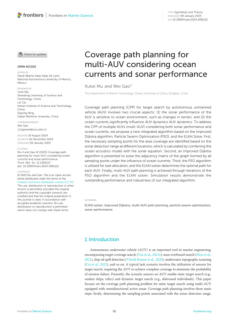
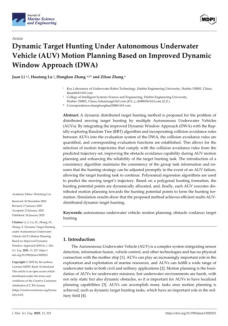
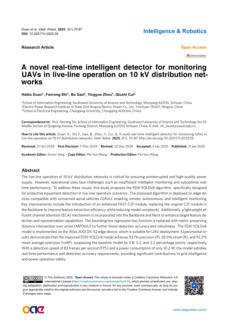



4 - Stackelberg game-based anti-disturbance control for unmanned
surface vessels via integrative reinforcement learning.
Authors: Yizhen Meng, Chun Liu, Jing Zhao, Jing Huang,
Guanbo Jing
Unmanned surface vessels (USVs) often face challenges
from ocean waves that disrupt their intended path. To
address this, a new control strategy using Stackelberg
game theory is proposed. It includes a velocity error
dynamic system that allows USVs to optimize control and
reject disturbances through a leader-follower model. The
strategy's effectiveness is confirmed by analyzing Nash
equilibrium, and reinforcement learning is used to find the
optimal solution. Simulation results show improved
tracking accuracy and reduced energy use.
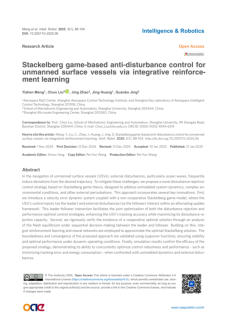
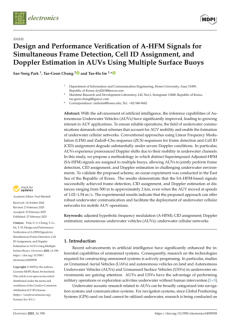
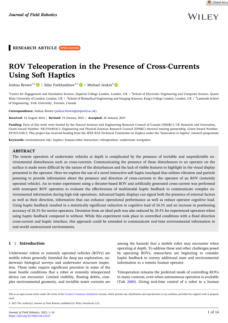
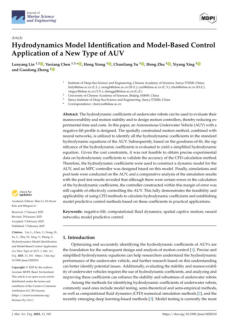
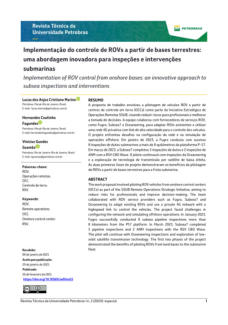
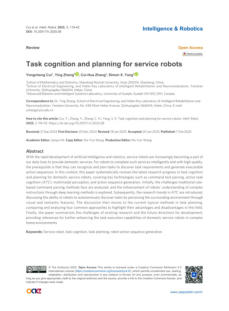
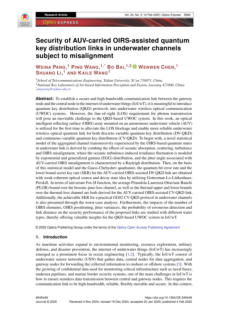
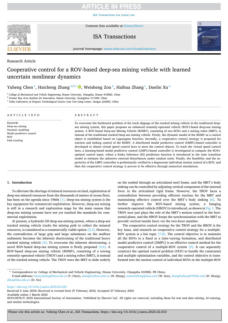
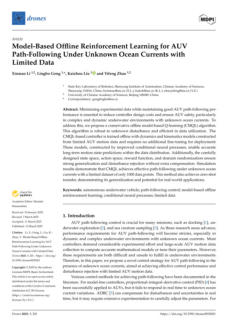
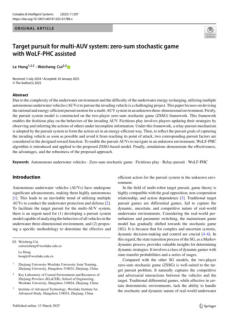
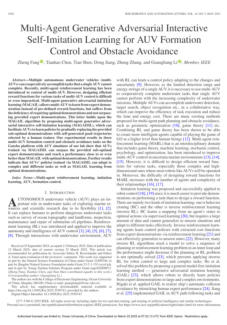


Click on the
octopus to return to
the top of the page








5 - The risk control of rollover safety for new energy vehicles based
on wire controlled chassis system
Authors: Guosheng Wang
Technological innovation is crucial for the safety of new
energy vehicles. A fuzzy dynamic Markov control strategy
was used to design an anti-rollover wire-controlled chassis
system. The strategy achieved a wheel turning angle error
of 0.002° and a body roll angle of 3.0° in sharp turns. The
vehicle reached automotive safety integrity level D,
reducing accident risk and ensuring passenger safety and
dynamic stability. This provides a technical theory for
safety control of car rollover.
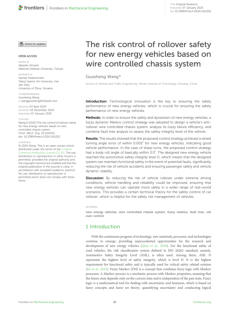



6 - Maximising the wrench capability of mobile manipulators with
experiments on a UVMS
Authors: Wilhelm J. Marais, Oscar Pizarro, and Stefan B.
Williams
This paper presents methods for optimizing contact
wrenches in underwater vehicle manipulator systems
(UVMS) using bi-level optimization and linear lower-level
problems. It considers multiple contact forces, tracking
trajectory, and dynamic motions. Experiments using a 6
degree of freedom underwater robot platform show
significant increases in wrench capability compared to
existing methods.
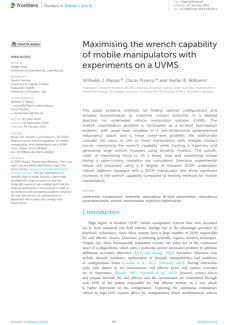



7 - Optimization of Configuration Design for Underwater Dam
Defect Detection Vehicles
Authors: Hong-Xia Cheng, Mei-Jie Cao, Peng-Fei Xu, Yan
Kai, Zi-Peng Wang, Gang Wan, and Qiao Hu
This study develops a streamlined underwater vehicle
design and operational framework for underwater dam
defect detection. The vehicle's design is inspired by bionic
principles and uses parametric modeling. Hydrodynamic
coefficients are calculated and validated through towing
experiments. An optimization function is established with
resistance and stability objectives. The vehicle achieves
static and dynamic stability in both horizontal and vertical
planes, but exhibits limited dynamic stability in the
horizontal plane.
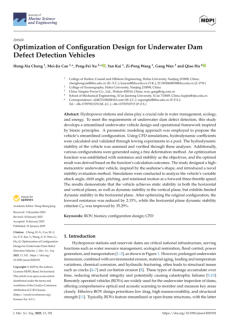



8 - Nu—A Marine Life Monitoring and Exploration Submarine System
Authors:
Ali A. M. R. Behiry, Tarek Dafar, Ahmed E. M. Hassan, Faisal
Hassan, Abdullah AlGohary, and Mounib Khanafer
Marine life exploration faces challenges like limited time,
depth restrictions, and safety risks. Nu, a 3D-printed
Remotely Operated Underwater Vehicle, addresses these
by using Long Range technology for wireless operation
and a live-feed camera for fish species classification. It uses
Brushless Direct Current motors for long-distance
movement and water pump motors for precise
navigation. Nu's functionality was evaluated in a
controlled 2.5-m-deep body of water, achieving an
average precision of 60% in fish detection and 97% in
species classification.
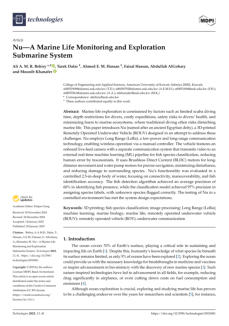



9 - Securing BGP ASAP: ASPA and other Post-ROV Defenses
Authors:
Justin Furuness, Cameron Morris, Reynaldo Morillo, Arvind
Kasiliya, Bing Wang, Amir Herzberg
The adoption of Route Origin Validation (ROV) is rapidly
increasing, making prefix and subprefix hijacks less
effective. The Autonomous System Provider Authorization
(ASPA) proposal, which focuses on route leakage and foils
some other attacks, is being studied. Simulations show
that prefix hijacks are less effective than forged-origin
hijacks, and subprefix hijacks are reduced. ASPA
significantly protects against post-ROV attacks, even in
partial adoption, and is effective even when tier-1 ASes are
not adopting.
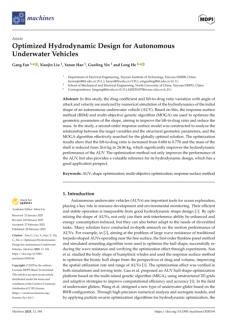



10 - MUFFNet: lightweight dynamic underwater image
enhancement network based on multi-scale frequency
Authors: Dechuan Kong, Yandi Zhang, Xiaohu Zhao,
Yanqiang Wang, and Lei Cai
Underwater Human-Robot Interaction technology has
revolutionized marine exploration and conservation.
However, basic underwater robots struggle with complex
environments, causing blurry images. MUFFNet, an
underwater image enhancement network, addresses this
issue by utilizing multi-scale frequency analysis.
Experimental results show MUFFNet outperforms existing
models, consumes fewer computational resources, and
aligns enhanced images more closely with human visual
perception.
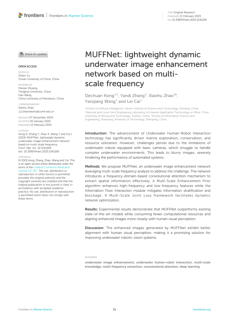



11 - Experimental application of gliders communication system in
South China Sea
Authors: Shuyang Jia, Baoheng Liu, Sichen Zou, and
Xiaochuan Zhang
A water acoustic communication system was designed
using underwater gliders. The system consists of a surface
wave glider and an acoustic underwater glider, equipped
with ultra-short baseline and acoustic modulation devices.
Real-time data transmission is performed using
underwater acoustic communication equipment. The
system can dive to over 1,000m depth and has a standby
power consumption of 5 mW.
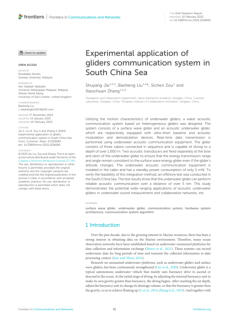



12 - Adaptive formation learning control for cooperative AUVs
under complete uncertainty
Authors: Emadodin Jandaghi, Mingxi Zhou, Paolo
Stegagno, and Chengzhi Yuan
This paper presents a two-layer framework for adaptive
formation control in Autonomous Underwater Vehicles
(AUVs), addressing the need for adaptability without
knowledge of system dynamics or environmental data.
The framework uses a cooperative estimator for inter-
agent communication and a decentralized deterministic
learning controller for precise trajectory control. The
framework's radial basis function neural networks store
dynamic information, eliminating the need for relearning
after system restarts.
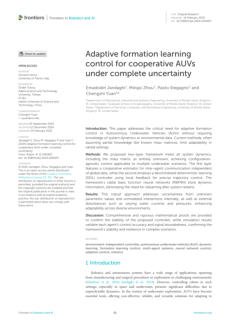



13 - Three-dimensional dynamic trajectory planning for
autonomous underwater robots under the PPO-IIFDS
Framework
Authors: Joshua Brown, Ildar Farkhatdinov, Michael
Jenkin
The remote operation of underwater vehicles is
challenging due to unseen environmental disturbances
like cross-currents. This study investigates a new haptic
touchpad that uses vibrations to inform operators about
cross-currents. An experiment showed that haptic
feedback significantly reduced cognitive load and
improved positioning accuracy for operators. Although
conducted under controlled conditions, this method can
be applied in real-world situations to share live
environmental data.
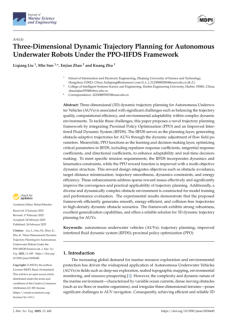



14 - Dynamic Task Allocation for Heterogeneous Multi-Autonomous
Underwater Vehicle Collaboration Under Mine
Countermeasures Missions
Authors: Juan Li, Baohua Liu, Caiyun Liu, and Cong Lin
The SWCBBA-PR algorithm is designed to address the
reallocation problem in mine countermeasures (MCM)
combat scenarios. It considers underwater
communication limitations and introduces a soft time
window mechanism and partial reallocation mechanism.
The algorithm has been validated through simulation and
shows good convergence performance, generating an
optimal allocation scheme for MCM mission emergence.
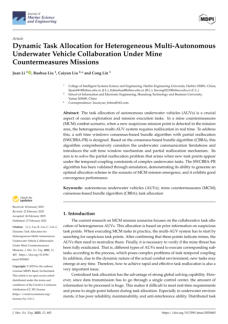



15 - Nonlinear Sliding-Mode Super-Twisting Reaching Law for
Unmanned Surface Vessel Formation Control Under Coupling
Deception Attacks

Authors: Yifan Wang, Qiang Zhang, Yaping Zhu, Yancai
Hu, and Xin Hu
This paper presents a nonlinear sliding-mode super-
twisting reaching law algorithm designed to address
coupling interference in USV formations during
cooperative mining operations. The algorithm improves
chatter characteristics, addresses low fitting accuracy, and
fends off signal-data interference attacks. It also introduces
a nonlinear saturation fault-tolerant filtering mechanism
and a nonlinear fitting factor. The algorithm's stability is
verified through Lyapunov theory, enabling stability within
12s and improving control accuracy for each ship.
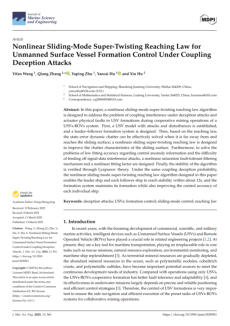



16 - Optimized Hydrodynamic Design for Autonomous Underwater
Vehicles
Authors: Gang Fan, Xiaojin Liu, Yanan Hao, Guoling Yin,
and Long He
The study analyzes drag coefficient and lift-to-drag ratio
variation in an autonomous underwater vehicle (AUV)
using numerical simulation. The response surface method
(RSM) and multi-objective genetic algorithm (MOGA) are
used to optimize geometric parameters, aiming to
improve lift-to-drag ratio and reduce shell mass. The
optimization results increase lift-to-drag ratio and shell
mass, improving AUV performance and providing a
reference for hydrodynamic design.
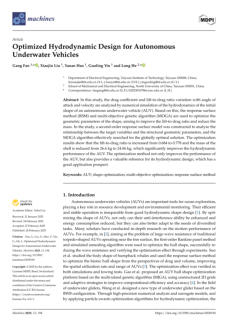



17 - Autonomous Sea Floor Coverage with Constrained Input
Autonomous Underwater Vehicles: Integrated Path Planning
and Control

Authors: Athanasios K. Gkesoulis, Panagiotis Georgakis,
George C. Karras, and Charalampos P.
Bechlioulis
This work presents a fully integrated framework for
autonomous underwater vehicles (AUVs) to ensure
seafloor coverage in adverse environments. It combines
optimal coverage path planning with a robust
constrained control algorithm. The solution is validated in
a high-fidelity simulation environment, demonstrating the
synergy between planning and control, making it ready
for practical seafloor operations like underwater debris
detection.
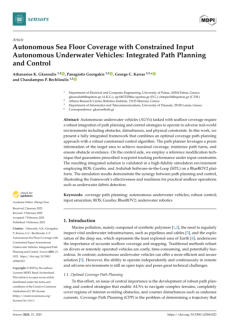



28 - Design and Simulation of ROV Wheel Electromagnetic
Adsorption Structure
Authors: Zihan Sha
This paper explores the wheeled magnetic adsorption
structure of a remotely operated underwater vehicle
(ROV) to replace manual labor in inspecting underwater
ferromagnetic surfaces. The design integrates wheeled
wall-climbing technology and electromagnets for stable
adhesion. The study evaluates electromagnet selection
and performance, and simulation experiments validate
optimal design parameters.
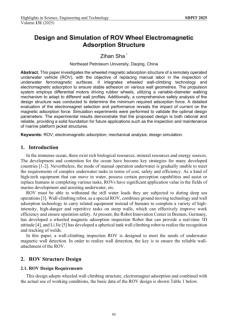



29 - Design, Development, and Testing of a Compact Underwater
ROV for Inspection and Exploration
Authors: Mohd Shahrieel Mohd Aras, Teoh Xi Yin, Fauzal
Naim Zohedi, Mohd Bazli Bahar, Mohamad
Haniff Harun, Alias Khamis, Zairi Ismael Rizman
This study presents the design and development of a four-
degree-of-freedom underwater Remotely Operated
Vehicle (ROV) for basic underwater inspection tasks. The
ROV is designed using Fusion 360 software and
evaluated for performance metrics. The final product is a
durable, lightweight acrylic frame with sensors, cameras,
and weatherproof housing, managed by an Arduino Uno
microcontroller.
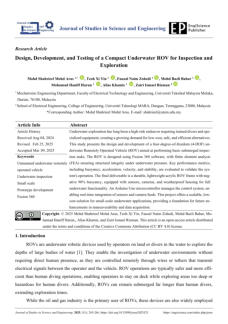



30 - Research on the Control Method for Remotely Operated
Vehicle Active Docking with Autonomous Underwater Vehicles
Based on GFSMO-NMPC

Authors: Hongxu Dai, Yunxiu Zhang, Shengguo Cui,
Xinhui Zheng, and Qifeng Zhang
The study proposes a control method for Remotely
Operated Vehicles (ROVs) to actively dock with
Autonomous Underwater Vehicles (AUVs), addressing
limitations like restricted maneuverability and external
disturbances. It designs a process and control strategy, a
Nonlinear Model Predictive Controller, and conducts a
joint simulation experiment, achieving a 90% success rate
under different disturbances.
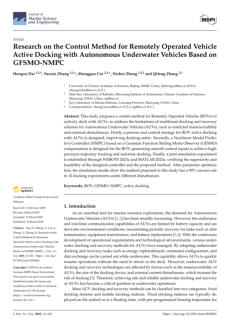



31 - Ship Resistance Analysis of a Waterjet Remotely Operated
Vehicle (ROV) Using Computational Fluid Dynamics (CFD)
Method

Authors: Eurico Leonardo Kause, Tri Susanto
This study analyzed the resistance of a waterjet remotely
operated vehicle (ROV) propulsion system, finding that it
increased by 5.69 N using the CFD method and 1.75% in
prisoner comparison using the maxsurf method. The
waterjet ROV model had a higher thrust increase of 9.21
N compared to a conventional propeller model of 6.94 N.
The waterjet ROV's placement on the outer side of the
ROV frame released the original propeller, reducing
turbulence and friction in the water. However, the surface
of the ROV frame with waterjet propulsion components
caused higher hydrodynamic pressure.
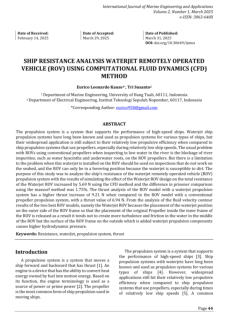



32 - From Camera Image to Active Target Tracking: Modelling,
Encoding and Metrical Analysis for Unmanned Underwater
Vehicles

Authors: Samuel Appleby, Giacomo Bergami, and Gary
Ushaw
Marine mammal monitoring is crucial for cetacean
conservation. Traditional tagging methods are intrusive
and susceptible to infection. A less intrusive approach uses
underwater vehicle navigation (UUV) commanded by a
human operator. AI for autonomous underwater vehicle
navigation models training environments in simulation,
providing visual and physical fidelity suitable for sim-to-real
transfer. SWiMM2.0, a Unity simulation modeling of a
BLUEROV UUV with a DRL backend, combines simulation
modeling with custom behavior metrics for successful
tracking.
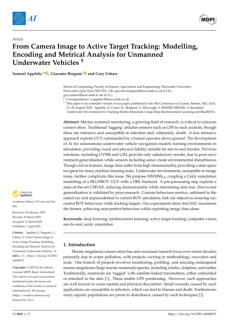



33 - Deep Reinforcement Learning Based Active Disturbance
Rejection Control for ROV Position and Attitude Control
Authors: Gaosheng Luo, Dong Zhang, Wei Feng, Zhe
Jiang, and Xingchen Liu
This paper proposes a position and attitude control
strategy for underwater robots using a reinforcement
learning active disturbance rejection controller. The
controller has shown satisfactory results in underwater
robot control, but fixed-parameter controllers cannot
achieve optimal performance. The deep deterministic
policy gradient algorithm is used to optimize the linear
extended state observer (LESO), allowing for more
accurate estimation of model uncertainties and
environmental disturbances. Simulation results show the
proposed control scheme significantly improves
disturbance estimation accuracy, leading to higher control
precision and robustness.
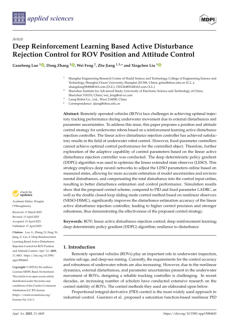



34 - Design and mechanical analysis of wall-climbing ROV
adsorption structure
Authors: Xuqing Liu, Jie Yu, Xinzhu Li, Changqin Chen,
Xiao Chen, Xin Deng
This paper explores the design and reliability of a wheeled
walking structure using electromagnets for remotely
operated underwater vehicles. The structure offers high
adsorption reliability, controllable strength, and
convenient separation from the magnetic wall. The study
also investigates the influence of electromagnet current
input on adsorption capacity.
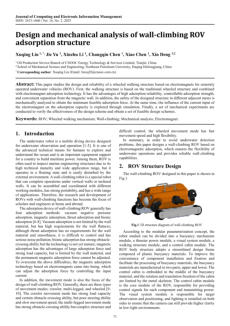



35 - Event-Triggered Adaptive Backstepping Control of
Underactuated AUVs with Input Saturation
Authors: Feng Qian, Yusheng Zheng, Ao Wang, and
Jianping Cai
This paper introduces a dynamic event-triggered adaptive
backstepping control for underactuated autonomous
underwater vehicle systems (AUVs) with input saturation.
The system ensures stability by introducing a new auxiliary
signal system, combining the actuated part with the
auxiliary signal system, and constructing a dynamic event-
triggering mechanism.
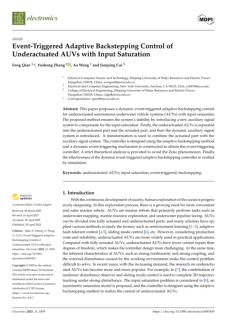



36 - Refining features for underwater object detection at the
frequency level
Authors: Wenling Wang, Zhibin Yu, and Mengxing
Huang
Underwater object detection (UOD) is a growing area of
research in computer vision. However, existing methods
are vulnerable due to light scattering and color shifting.
To address these issues, a multi-scale high-frequency
information enhancement module and a multi-scale
gated channel information optimization module were
designed. The method performed better than existing
detection methods on three typical underwater object
detection datasets, demonstrating its potential in
underwater object detection.
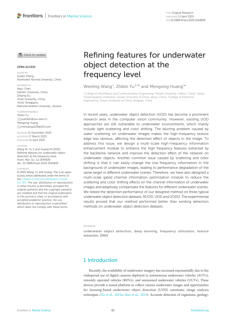



37 - Underwater instance segmentation: a method based on
channel spatial cross-cooperative attention mechanism and
feature prior fusion
Authors: Zhiqian He, Lijie Cao, Xiaoqing Xu, and Jianhao
Xu
This study proposes a novel Channel Space Coordinates
Attention (CSCA) attention module and Channel A Prior
Attention Fusion (CAPAF) feature fusion module to
improve underwater instance segmentation accuracy in
aquaculture. The CSCA module captures local and global
information by combining channel and spatial attention
weight, while the CAPAF module optimizes feature fusion
by removing redundant information. Experimental results
show significant improvements in instance segmentation
accuracy on various datasets.
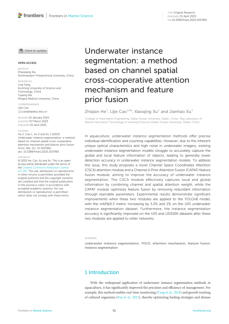



38 - Detailed Investigation of Cobalt-Rich Crusts in Complex
Seamount Terrains Using the Haima ROV: Integrating Optical
Imaging, Sampling, and Acoustic Methods
Authors: Yonghang Li, Huiqiang Yao, Zongheng Chen,
Lixing Wang, Haoyi Zhou, Shi Zhang, and Bin
Zhao
The Haima remotely operated vehicle (ROV) has been
used to enhance surveys of cobalt-rich crusts (CRCs) on
complex seamount terrains. The 4500-m-class ROV
integrates advanced payloads, such as underwater
positioning systems, multi-angle cameras, and subsea
shallow drilling systems. The data collected from the ROV
was highly reliable, with high-definition video mapping of
CRC distribution across varied terrains. The Haima ROV
successfully investigated CRC resources in complex
terrains, laying the groundwork for seamount crust
resource evaluations.
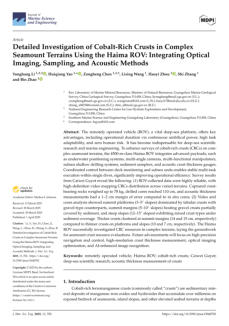



39 - Mid-Water Ocean Current Field Estimation Using Radial Basis
Functions Based on Multibeam Bathymetric Survey Data for
AUV Navigation
Authors: Jiawen Liu, Kaixuan Wang, Shuai Chang, and
Lin Pan
This paper proposes a method for mid-water ocean
current estimation using multibeam bathymetric survey
data. It models the regional unknown current field using
radius basis functions (RBFs) and establishes an AUV
dead-reckoning model. The method also divides
multibeam bathymetric point cloud data into submaps
and performs a terrain-matching algorithm. Numerical
simulations and experiments show that the proposed
method accurately captures complex spatial variations in
ocean currents, improving positioning accuracy and
reducing errors in autonomous underwater vehicle
navigation.
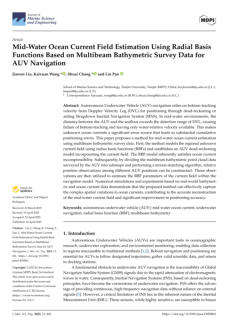



40 - Multi-AUV Hunting Strategy Based on Regularized Competitor
Model in Deep Reinforcement Learning
Authors: Yancheng Sui, Zhuo Wang, Guiqiang Bai, and
Hao Lu
This study explores the application of reinforcement
learning algorithms in a competitive game scenario
involving multi-autonomous underwater vehicles (MUVs).
It introduces an optimality operator and redefines the
objective function of multi-agent reinforcement learning
(MARL), transforming uncertain states into solvable
inference problems. The proposed algorithm shows
strong adaptability and higher success rate.
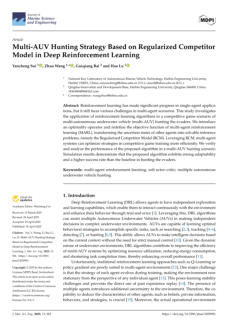



41 - The Effective Business Model for Commercialization of ROV
Products in Indonesia
Authors: Imam Sutrisno, Budianto , Yuning Widiarti,
Mohammad Basuki, Rahmat, Rini Indarti, Dinda
Pramanta, Pranowo Sidi
This research explores innovative business models for
commercializing Remotely Operated Vehicles (ROVs) in
the Indonesian market, identifying ROV-as-a-Service,
technology licensing, and joint ventures. It highlights the
importance of tailoring models to specific market
segments and leveraging digital technologies for
operational efficiency and customer satisfaction.
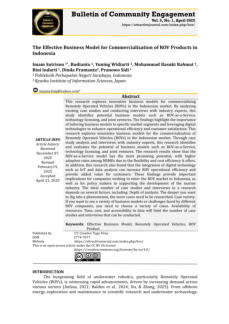



42 - Work Systems in Underwater ROV Operations: Educational
Insights for Workforce Development in Maritime Engineering
Authors: Minji Yun, Kent J. Crippen
This study uses Work Systems Theory to analyze
underwater remotely operated vehicle (ROV) operations,
identifying ten distinct work systems based on industry
sectors, seniority levels, job tasks, and educational
requirements. It provides recommendations for
engineering education, emphasizing the need for
customized programs to meet the evolving workforce
demands in this rapidly evolving field.
